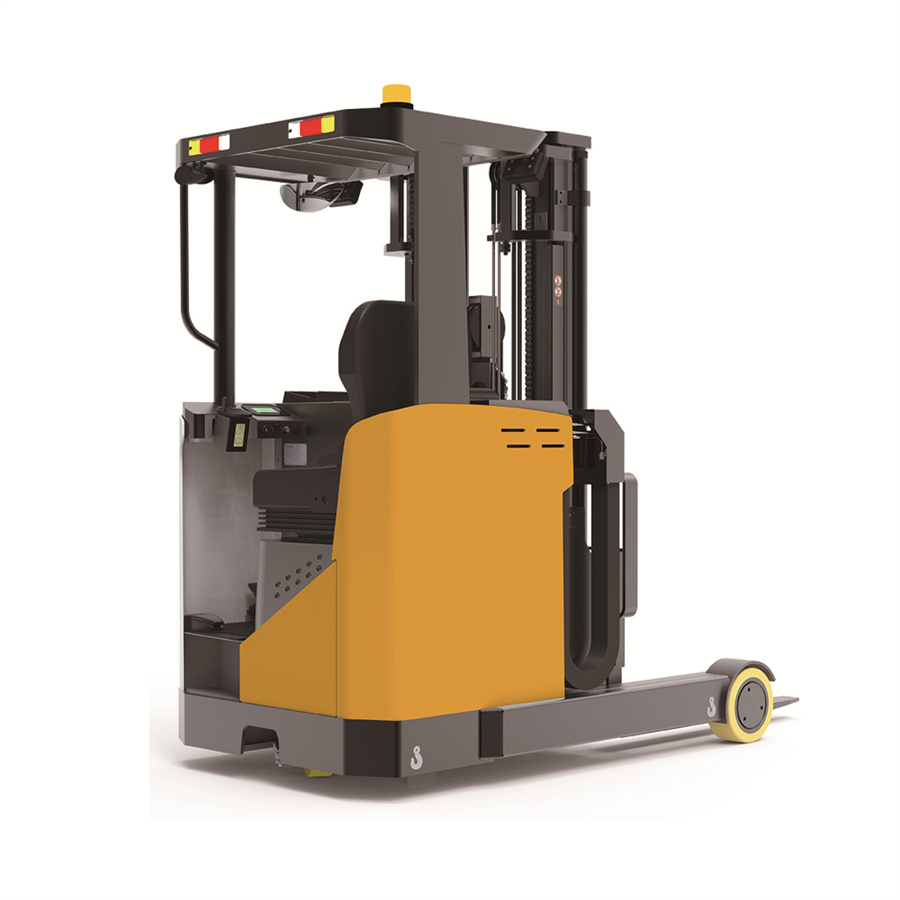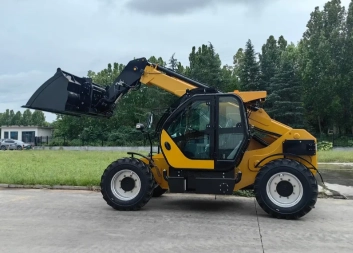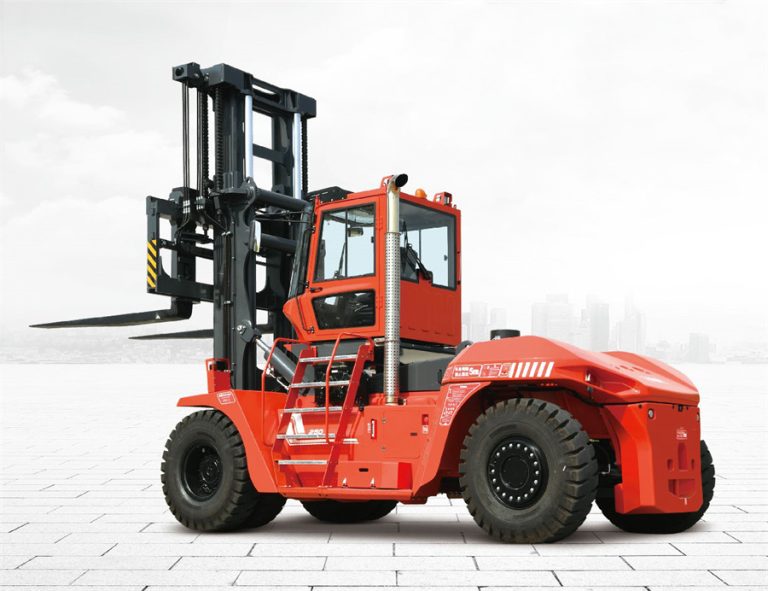
Have you ever stepped into a huge warehouse and wondered how they stack items so high without chaos? That’s where reach trucks shine. These handy machines transform tight spaces into productive zones for people in logistics and storage. Whether you manage a warehouse or just want to learn more, stay with me. We’ll explore what a reach truck is, dig into how it operates, and show why it’s a smart choice for smooth workflows. By the end, you’ll see how it fits into real-life settings—no boring stuff, just the good parts.
Getting the Basics of a Reach Truck
So, what exactly is a reach truck? It’s a special forklift designed for narrow aisles and tall shelves in warehouses. Unlike a regular forklift that needs wide lanes to turn, this truck handles cramped areas with ease. It usually runs on electricity, keeping things quiet and fume-free—perfect for indoor jobs.
Imagine this: in a busy storage hub, racks tower 30 or 40 feet tall. A typical forklift might crash into shelves or take too long to move. But a reach truck? It glides in, stretches its forks to grab a pallet, and lifts it up without much fuss. That’s the trick. They’re built for handling single pallets with care.
In terms of numbers, most handle loads from 3,000 to 4,500 pounds, though some tougher models go beyond. Lift heights? Often reaching 35 feet or more. I once visited a parts warehouse where aisles were barely wider than the truck—without these, they’d lose tons of storage room.
How It Stands Out from Other Forklifts
Not every forklift is the same. Here’s a quick look:
- Reach Truck vs. Standard Forklift: Standard ones use back weights for balance, making them bulky. Reach trucks use a pantograph to stretch forks forward, staying steady without extra space.
- Reach Truck vs. Order Picker: Order pickers lift the driver with the load for picking items by hand. Reach trucks keep the operator low, focusing on full pallets.
- Reach Truck vs. Turret Truck: Turret trucks spin forks around for tighter turns, but they cost more and aren’t needed for most jobs.
Simply put, if your space has tall, close racks, a reach truck saves room and speeds up work. Still, it’s not great for bumpy outdoor areas—that’s where diesel forklifts step in.
Main Parts of a Reach Truck
Let’s break it down. A reach truck isn’t just a box with wheels; it’s full of parts that make it work.
- Mast and Pantograph: The mast lifts the forks upward. The pantograph—kind of like scissors—lets the forks reach out sideways, up to a couple of feet.
- Forks and Carriage: Regular forks, but they move apart from the truck’s body. This keeps the balance tight.
- Battery and Drive System: Large batteries (think 480Ah to 600Ah in some models) power the electric motor. Front-drive systems help it glide through narrow paths.
- Operator Area: Often a seat or standing spot, with comfy seats, easy controls, and clear views. Safety cages protect from falls.
- Wheels and Steering: Small turns thanks to flexible steering. Tough wheels grip smooth floors without leaving marks.
Check out this table for typical details:
| Part | Job | Example Detail |
|---|---|---|
| Mast | Raises loads upward | Up to 10.5 meters max height |
| Pantograph | Stretches forks forward | Reach of 2-3 feet |
| Battery | Runs the truck | 480-600Ah, saves energy |
| Turning Space | Allows tight turns | As low as 5-6 feet |
| Load Limit | Max weight it handles | 3,500-4,500 lbs |
These pieces team up smoothly, but regular care is a must—skip it, and you’ll face delays.
How a Reach Truck Operates

Okay, the details. Running a reach truck isn’t hard, but it needs practice. Here’s how it goes.
The driver jumps in—often facing sideways for a better look down aisles. Turn on the battery, and you’re moving. Controls? Joysticks or levers for driving, lifting, tilting, and reaching.
To grab a load: Roll up to the rack straight. Stretch the pantograph to slide forks under the pallet. Lift a bit to clear the shelf, then pull the forks back over the truck’s wheels for stability. Drive off carefully. Setting down works backward—stretch, lower, pull back.
What drives this? Hydraulics for lifting, electric motors for moving. The battery powers it all, and smart systems manage energy so it doesn’t die mid-job. Picture stocking gadgets in a delivery center. Aisle width: 6 feet. You zip in, reach a 25-foot shelf, grab a pallet, and stack it without a mess. One report I read said reach trucks can boost storage by 25-30% over old setups.
But watch out. Operators must check load weights; too much, and it might tip. Those high lifts? Wind or uneven floors can cause issues, though cushions help soften drops.
Advantages and Uses of Reach Trucks
Why use one? It’s all about space and speed.
- Room Savings: Narrow aisles mean more racks, more stock. Warehouses can fit 20-30% more items.
- Faster Work: Quicker stacking, less turning. In online stores, this cuts delivery time.
- Money-Smart: Electric power lowers fuel costs, plus it’s gentler on floors.
- Flexible: Works for food storage, retail delivery, or auto parts—any controlled space.
Uses? Think big shops, cold rooms (with warm cabs), or car part hubs. A friend in logistics switched to reach trucks and shrank his aisles—inventory grew without a bigger building. Downside? They’re indoor champs; outdoors, they struggle with rough ground.
Safety Features and Smart Tips
Safety comes first—these lift heavy loads high up. New reach trucks come with:
- Load Stabilizers: Pads that slow drops, preventing crashes.
- Sight Helpers: Cameras or mirrors for blind spots.
- Anti-Tip Systems: Sensors that stop if balance shifts.
- Comfy Designs: Reduce strain, keeping drivers alert.
Smart tips? Get proper training. Check daily—look at batteries, hydraulics. Load placement matters; uneven pallets invite trouble. And always stick to speed limits in aisles. I’ve heard tales of close calls from hurrying—not worth the risk.
Picking the Right Reach Truck for You
Choosing one? Size up your space. Measure aisles, shelf heights. Load weights set the capacity. Battery life for shifts—aim for 8-10 hours. Models with clever drives shine in tight spots.
Think about maintenance ease; side-access batteries speed swaps. Cost? Entry-level around $20k-$30k, but savings come fast from better work. Talk to suppliers for trials—test it in your area.
JinChengYu FORKLIFT as a Reach Truck Supplier
Looking for solid reach trucks? Check out JinChengYu FORKLIFT. Based in Qingdao, China, since 2002, they’ve earned a name for sturdy material handling gear. They ship worldwide, offering everything from diesel to electric models, including reach trucks. Their gear stands out with smart front-drive, big batteries for energy savings, and lifts up to 10.5 meters. Quality matters—they test each machine before shipping and offer custom changes. With support across South America to Europe, they handle global needs, rentals, and parts. Their goal? Keep improving to keep customers happy. Worth a look if you need reliable equipment.
Wrapping Up
To sum up, reach trucks are warehouse heroes, lifting storage upward while handling tight spots. They run with clever hydraulics and electrics, boosting efficiency without extra bulk. Whether stacking shelves or maximizing space, knowing what a reach truck is and how it works can change your operations. If efficiency matters, give one a try—it might be the lift you need.
Common Questions
What’s a reach truck used for in warehouses?
A reach truck mainly stacks and grabs pallets in narrow aisles and high racks. It saves space, handling loads up to 4,500 pounds at heights over 30 feet, perfect for delivery centers where room is tight.
How does a reach truck differ from a regular forklift?
Unlike regular forklifts that use back weights, a reach truck stretches forks forward with a pantograph. This keeps it steady in tight spaces, working in aisles as narrow as 8-10 feet without wide turns.
What safety tools does a reach truck have?
Key tools include drop pads to soften landings, balance sensors to prevent tips, and comfy cabs for better control. Always train well to avoid problems with high lifts.
Can a reach truck work outside?
Usually not—they’re made for smooth indoor floors. Rough ground could harm wheels or batteries. For outdoor jobs, try rough-terrain forklifts instead.
How do I keep a reach truck running well?
Check batteries, hydraulics, and tires often. Charge fully after shifts, look for leaks, and follow the maker’s guide. This keeps delays low and extends its life—easy steps that pay off.










